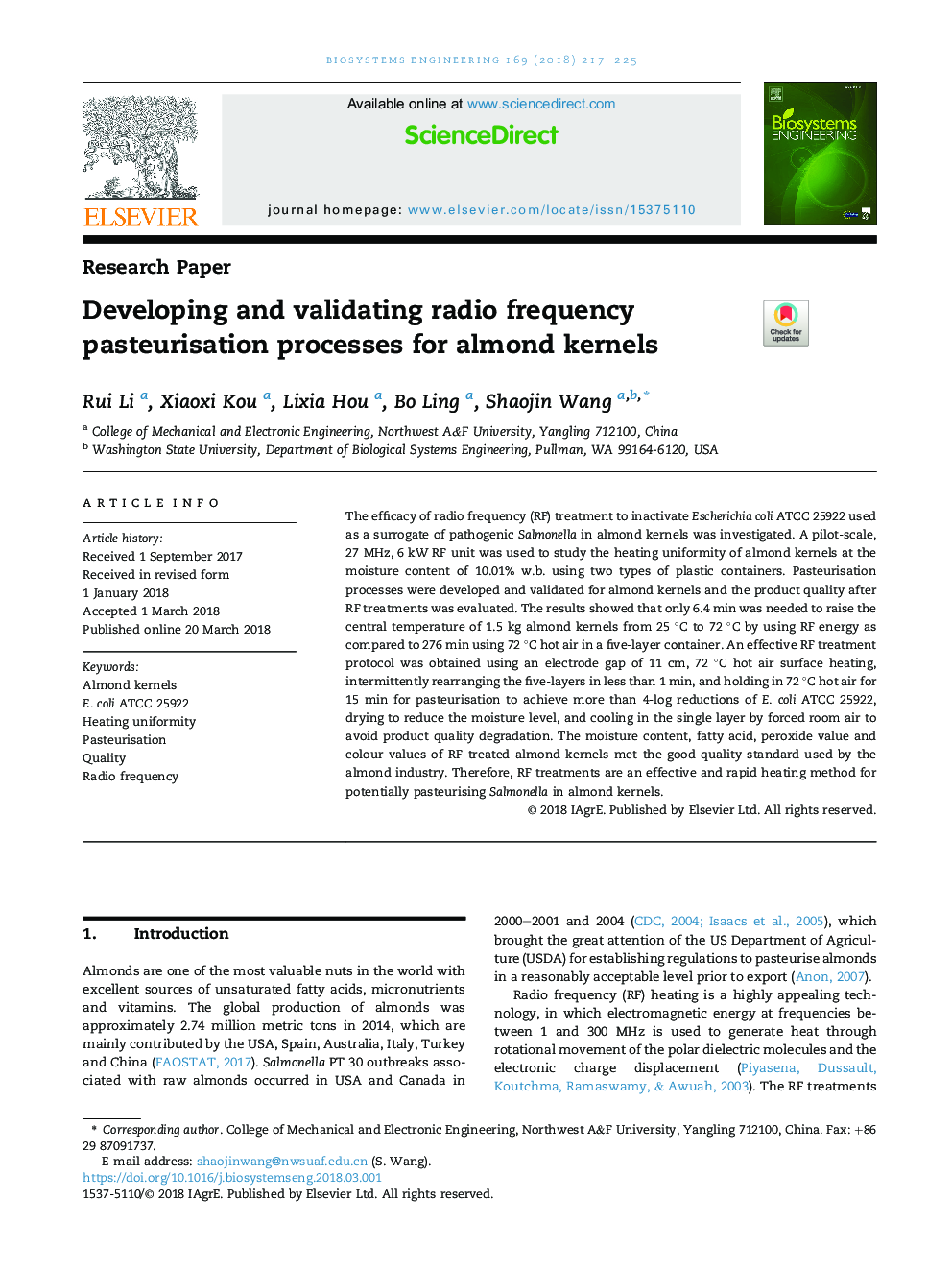| Article ID | Journal | Published Year | Pages | File Type |
|---|---|---|---|---|
| 8054759 | Biosystems Engineering | 2018 | 9 Pages |
Abstract
The efficacy of radio frequency (RF) treatment to inactivate Escherichia coli ATCC 25922 used as a surrogate of pathogenic Salmonella in almond kernels was investigated. A pilot-scale, 27 MHz, 6 kW RF unit was used to study the heating uniformity of almond kernels at the moisture content of 10.01% w.b. using two types of plastic containers. Pasteurisation processes were developed and validated for almond kernels and the product quality after RF treatments was evaluated. The results showed that only 6.4 min was needed to raise the central temperature of 1.5 kg almond kernels from 25 °C to 72 °C by using RF energy as compared to 276 min using 72 °C hot air in a five-layer container. An effective RF treatment protocol was obtained using an electrode gap of 11 cm, 72 °C hot air surface heating, intermittently rearranging the five-layers in less than 1 min, and holding in 72 °C hot air for 15 min for pasteurisation to achieve more than 4-log reductions of E. coli ATCC 25922, drying to reduce the moisture level, and cooling in the single layer by forced room air to avoid product quality degradation. The moisture content, fatty acid, peroxide value and colour values of RF treated almond kernels met the good quality standard used by the almond industry. Therefore, RF treatments are an effective and rapid heating method for potentially pasteurising Salmonella in almond kernels.
Related Topics
Physical Sciences and Engineering
Engineering
Control and Systems Engineering
Authors
Rui Li, Xiaoxi Kou, Lixia Hou, Bo Ling, Shaojin Wang,
